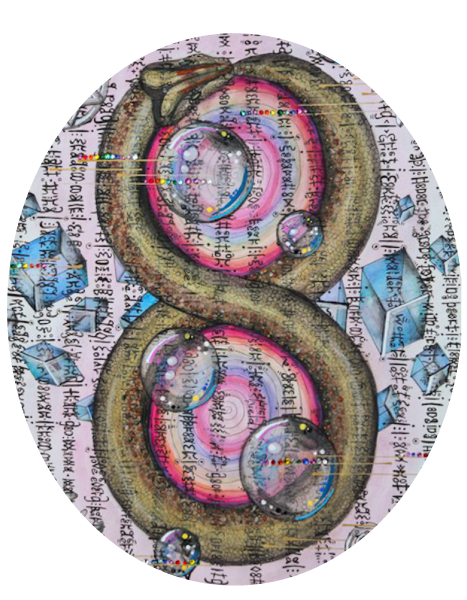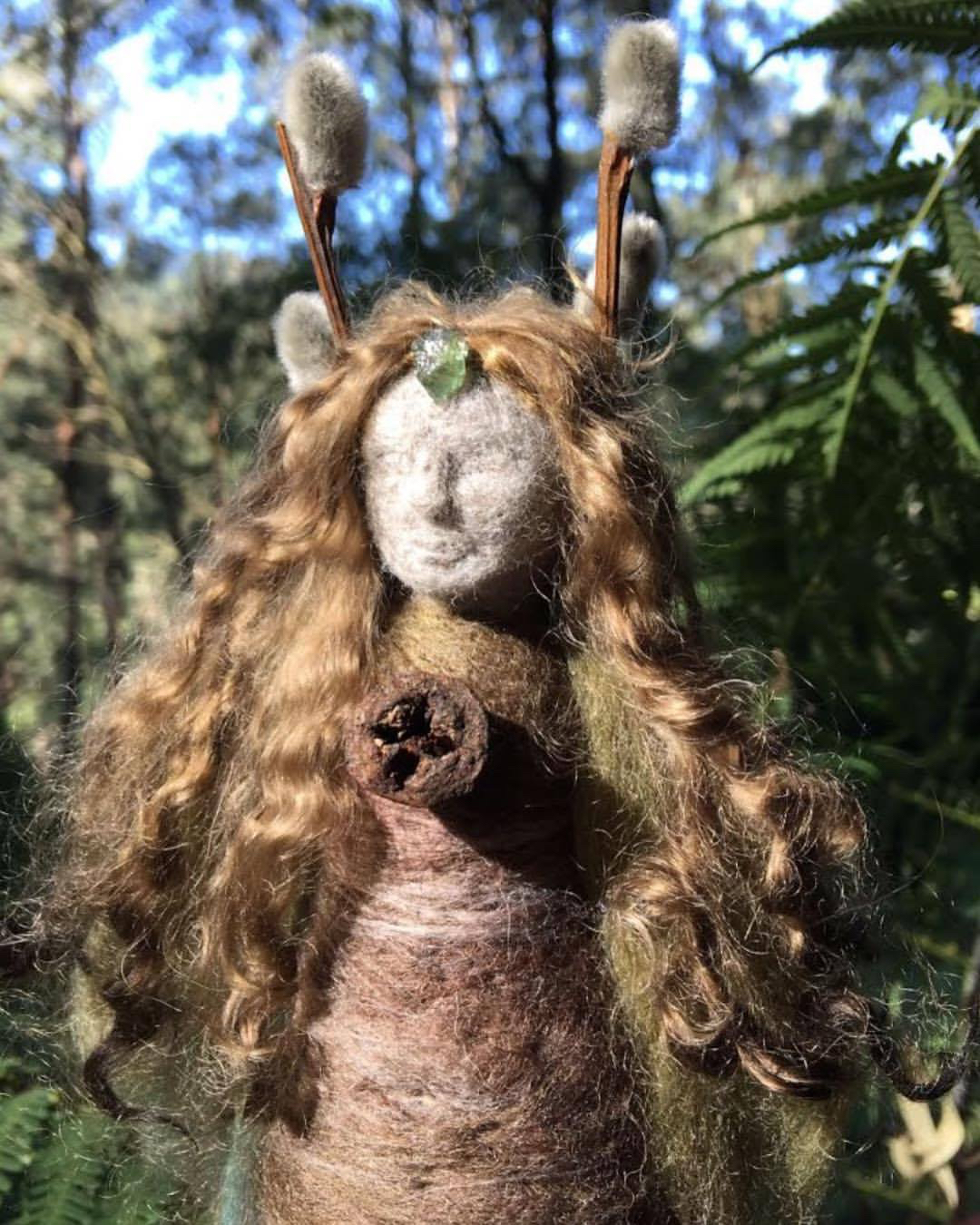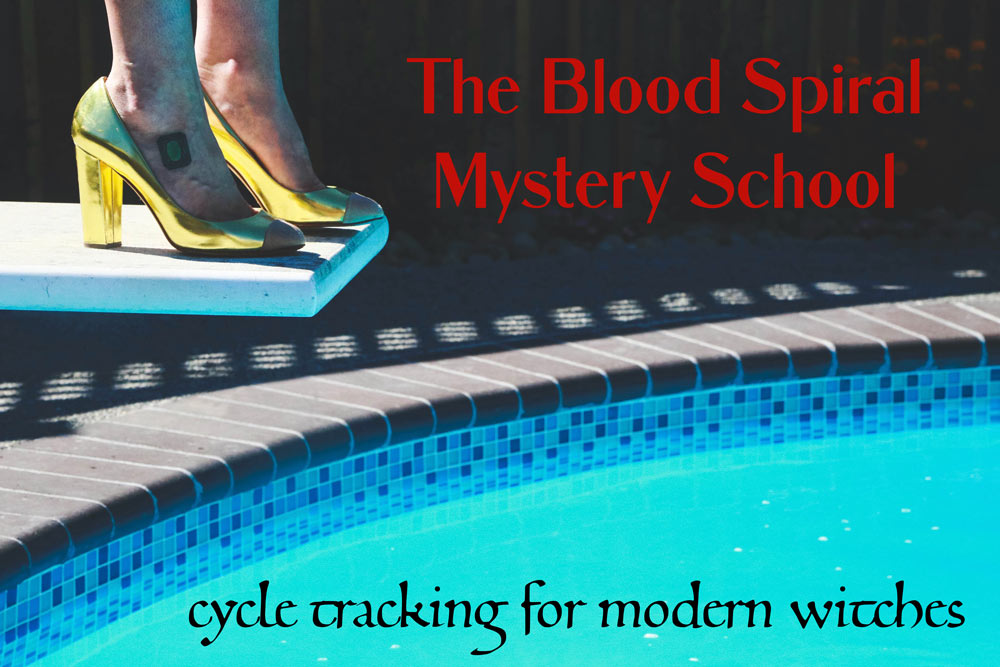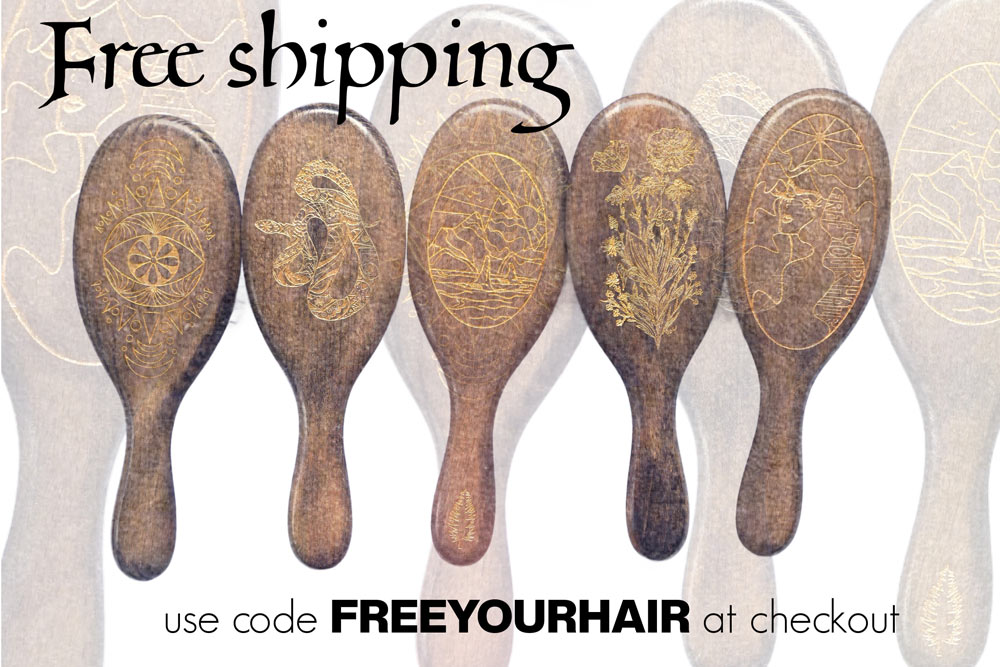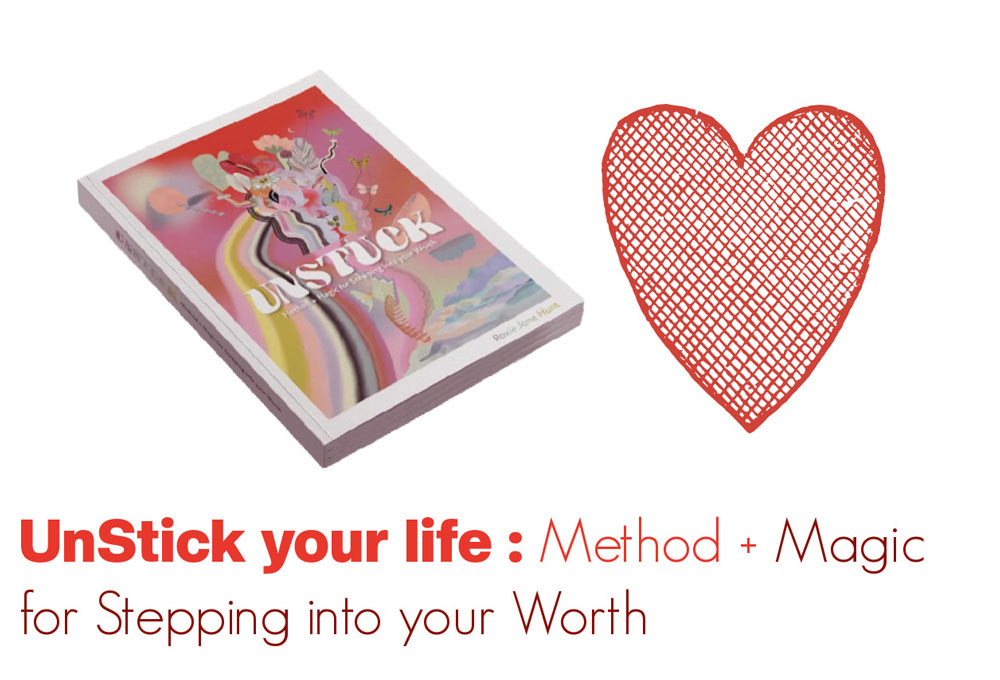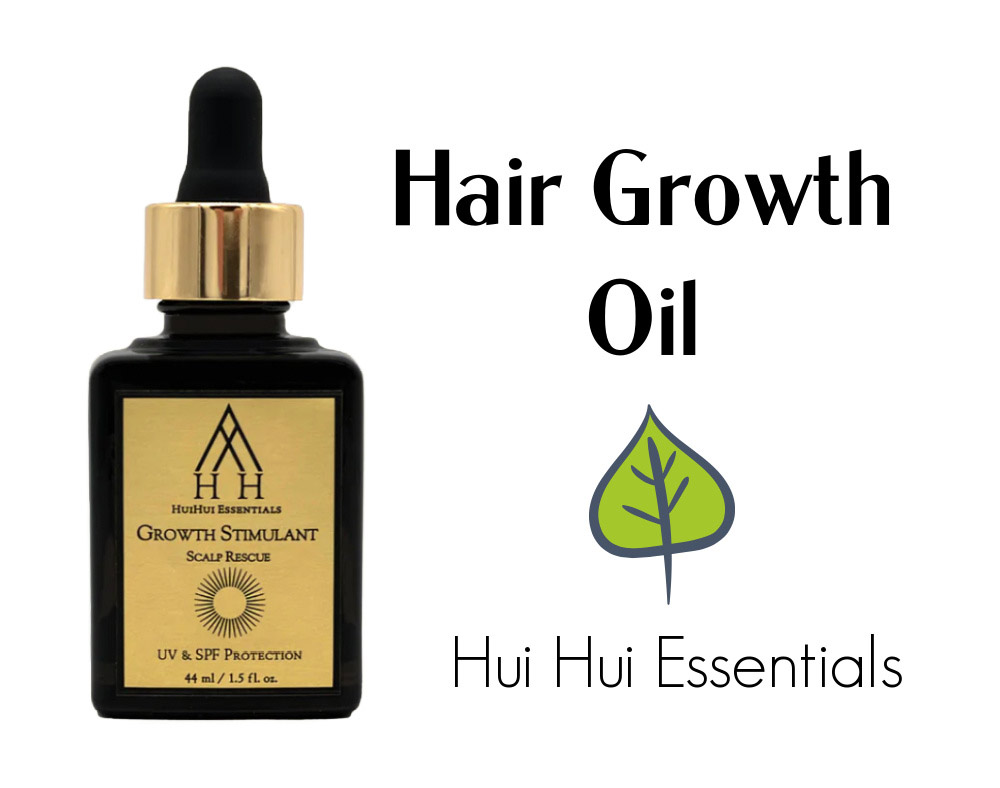The more I learn about hair and culture and ancestry, the more interested I find myself in the question of hair and spirit. A few months ago, I asked a question about Hair and Spirit. I was curious about the stories out there that illustrate the link between our hair and our spirits and identities, stories that bring the truth of this link to the surface.
A dear woman healer that I know of and admire very much named Julia Inglis of Sacred Familiar raised her hand over the internet and said, “I may have something to share.”
 Julia is an ancestral healer through folklore, storytelling and mythology. She lives in the forest in Australia where she makes medicine dolls, woven and felted characters containing natural elements and found fibers created to assist in the healing journey of an individual.
Julia is an ancestral healer through folklore, storytelling and mythology. She lives in the forest in Australia where she makes medicine dolls, woven and felted characters containing natural elements and found fibers created to assist in the healing journey of an individual.
Julia Inglis clearly spends a lot of time thinking about the energetics of fiber and the spirit within, and she offers today her thoughts and a beautifully woven story on a topic that sits deeply in her heart, on hair and spirit and healing, and the women of the Magdalene Laundries.
The Magdalene laundries were Asylums set up by the Catholic
Church in the 18-20th centuries in England, Ireland, Canada, Australia and the US for what they considered ‘ Wayward Women’…….Unwed, pregnant out of wedlock, women who lived alternatively to the normal standards of the day. Much like persecution of the Witches, the Magdelene Laundries served to enslave women who wouldn’t submit to the patriarchal oppression of the Catholic Church.
Julia Inglis has made it a mission to honor these women in her work, through story and creation of dolls to commemorate the lives of those effected. Here are her words on Hair, Spirit and Healing, through the experience of the Women of the Magdelene Laundries. Lets all take a moment to make room for these stories in our hearts so that we may never forget.
Hmmm hair and spirit feel forever linked to me. As if the tendrils of our hair are always in constant contact with spirit, moving and communicating with the atmosphere around us and holding ancient memory and DNA. Our hair can feel so electric, it can be a way to sense energy and spirit in a room – the hairs on arms stand up, the hairs on our head prickle and become alert. I watch this a lot in animals too – the way hairs stand up on a dog’s back when it becomes aware of needing to be alert, to investigate or when danger is near. I see hair more like our own personal fiber, our fur, our fleece. It is alive and full of creative possibility. I see the work you do Roxie and it reminds me of weaving with fibres. The braiding is perhaps a way of us to connect to and remember ancestral arts like weaving and feeling the living and creative spark that lives in our hair.
And there is so much in our hair that is familiar, people can recognise our own individual scent by smelling our hair, we can remember them. When someone we love is returned to us we hug them tight and often without thinking, smell their hair. On the day a baby is born they are passed through the arms of those who love them, each relative taking turns to hold the baby and smell their hair. We do it without thinking but I believe this is very old, that we are taking this moment to imprint the memory of their smell so that we will always know them, we will always recognise them and know how to find them again.
 This ritual and deep memory of hair and it’s connection to us runs through a lot of my work. I create spirit dolls as companions and friends to anyone in need and I make an effort to work with fleece and fiber from loving farms. I like to the know the people gathered the fiber and how much they love their animals. My own ancestors, for many generations were spinners and weavers and wool workers in Scotland but I only began to work with fibre 4 years ago when I moved to Sherbrooke Forest.
This ritual and deep memory of hair and it’s connection to us runs through a lot of my work. I create spirit dolls as companions and friends to anyone in need and I make an effort to work with fleece and fiber from loving farms. I like to the know the people gathered the fiber and how much they love their animals. My own ancestors, for many generations were spinners and weavers and wool workers in Scotland but I only began to work with fibre 4 years ago when I moved to Sherbrooke Forest.
The forest began to heal my own pain, and anxiety and as my mind quietened, my hands had an urge to craft. A friend showed me how to needle felt a woollen and from the moment I began, I have never stopped. And the first thing I did was bend my head and smell the wool. It was just as important to smell as to feel it, it still feels the only true way to recognise it. From the moment I held the fibre in my hand, it was as if I already knew what to do. And it was as if my hands had been longing to return to this ancestral craft.
I became obsessed with learning about fibre and ancestral textiles. I began sourcing all kind of fibers – plant fibres such as nettle and ramie dyed naturally with ancient dye plants such as woad and madder. And fiber from wool workers and farmers from around the world that were working to bring rare breeds of ancestral sheep and goats back from the brink of extinction. The same animals that had lived on the land with our ancestors, and provided them with fleece for clothing and blankets and fine weaving were now in danger.
I became aware of this movement of preserving and caring for ‘rare breeds’ and when I could I created dolls with this wool and fiber, so happy that in a small way I could help to assist in their preservation and I was also aware of this ancient memory in the fiber and the hair of this ancient bloodline living on in a doll and bringing the magic of that land and it’s stories to the doll’s new keepers.
 Rare breeds. I thought about this a lot as I made the dolls and carried on the work I had been dedicating my time to for the last 10 years, the work of Swan Blessing. Swan Blessing is the name of the personal and group sessions I hold for women to heal the memory of shame and fear from times of persecution of the women for working as healers, witches, midwives, herbalists. This ceremony works to clear the trauma in the female lineage of the Burning Times and the asylums and institutions that patriarchy built to contain, jail and silence the outspoken and wild women, the orphans and outcast, and the misdiagnosed psychics and mentally ill. The ceremony works not only to heal past life memories but also the collective memory of what happens to women who speak out, are different, are natural healers or unmarried mothers or women who have a healthy relationship to their own sexuality. Over the years of travelling and offering this ceremony to hundreds of women I kept hearing again and again how it was believed it was safer to be hidden, to work undercover and to not be found.
Rare breeds. I thought about this a lot as I made the dolls and carried on the work I had been dedicating my time to for the last 10 years, the work of Swan Blessing. Swan Blessing is the name of the personal and group sessions I hold for women to heal the memory of shame and fear from times of persecution of the women for working as healers, witches, midwives, herbalists. This ceremony works to clear the trauma in the female lineage of the Burning Times and the asylums and institutions that patriarchy built to contain, jail and silence the outspoken and wild women, the orphans and outcast, and the misdiagnosed psychics and mentally ill. The ceremony works not only to heal past life memories but also the collective memory of what happens to women who speak out, are different, are natural healers or unmarried mothers or women who have a healthy relationship to their own sexuality. Over the years of travelling and offering this ceremony to hundreds of women I kept hearing again and again how it was believed it was safer to be hidden, to work undercover and to not be found.
In 2013, six months after making my first doll, I began to dream about the women of the Magdalene Laundries. I had known about these Catholic institutions where women and children were locked up and forced to wash laundry from morning to night without pay, poor food and very little if any education. This was their punishment for being too outspoken, too attractive and bringing too much attention to themselves, for being homeless and for being pregnant without a husband.
The Magdalene Laundries named for Mary Magdalene the redeemed prostitute and sinner in the eyes of the church were meant to be places of penitence for ‘fallen women’. Ah yes, you may say, well this happened in the Victorian years and you are right – but did you know that the last Magdalene Laundry in Ireland only closed it’s doors in 1996? Many survivors of these cruel and damaging institutions are living among us now.
The dreams about these institutions grew stronger and stronger until one day I knew that I must gather at the site of the old Magdalene Laundry at the Abbotsford Convent here in my home in Melbourne, Australia and hold a ceremony to not only let the spirits of the women who were abused there know that they were loved but to also heal ourselves of the invisible chains that are still keeping us quiet, unseen, and afraid.
 One of the first things that was taken from you when you were incarcerated in the Laundries was your hair. It was cut roughly and as punishment – hair was seen as women’s vanity – another sin. There is a history of women having their heads shaved before entering prison, asylums, during wartime as punishment and even when women became sick.
One of the first things that was taken from you when you were incarcerated in the Laundries was your hair. It was cut roughly and as punishment – hair was seen as women’s vanity – another sin. There is a history of women having their heads shaved before entering prison, asylums, during wartime as punishment and even when women became sick.
I once made a doll for a grandmother in her 80s and the doll had long, long plaits. She told her granddaughter that she cried when she saw her because it reminded her of her own hair that had been cut because it was seen as ‘draining her health’ when she was a little girl and she’d never really gotten over it.
I have spoken to survivors of the Laundries and they have all spoken about the huge trauma and degradation of having their hair removed or even changed without their permission and under force. It is almost one of the strongest memories of their time there. It was a way to break the spirit of a wild young woman the moment she stepped through the door and it was affective.
Hair and the way we choose to wear it is so personal. It is not like clothing or fashion. It grows from us. It carries our DNA and ancient memory from our great grandmothers. The church did everything it could to cut ties and family bonds. A sure way to help break a familiar bond is to tell a family a lie about their daughter and how evil she is and then present to them (if they were actually allowed to visit), a child that no longer resembled their daughter in any way.
It is much easier to disconnect when we can no longer recognise the one we used to love. When a baby animal is born to a sick or grieving mother, it doesn’t get enough nutrients for it’s hair and it is born with what is called a ‘fever coat’. The fever coat is dull and lifeless and usually lacks vitality and colour. I think of these young girls ripped away from their families and away from their own mothers and many of them pregnant with their own babies, terrified and worked into the ground and fed so little.
I imagine their families finally getting a visit with their daughters in the Magdalene institutions and hugging these abused unrecognisable girls and leaning in to smell their chopped off hair and instead smelling not their child but a fever coat. Another link and memory lost. Not your daughter any longer but a different creature entirely who no longer looks like your own or even smiles like it. In her place an unfamiliar and sickly creature that has no trace of the wild spirited girl that once lived inside.
 A couple of years ago I began a project called Dolls for the Outcast – travelling to places of trauma neglect and leaving a spirit doll made from pure and loved fibers for the spirits who had lived through those events and also dolls for the living survivors. I have gifted dolls to survivors here in Australia and travelled to the Cross Bones Graveyard in London, once known as a Magdalene Grave for the prostitutes of Southwark who were not allowed to be buried in consecrated ground even though they had to pay the Bishop to work on the streets of his borough.
A couple of years ago I began a project called Dolls for the Outcast – travelling to places of trauma neglect and leaving a spirit doll made from pure and loved fibers for the spirits who had lived through those events and also dolls for the living survivors. I have gifted dolls to survivors here in Australia and travelled to the Cross Bones Graveyard in London, once known as a Magdalene Grave for the prostitutes of Southwark who were not allowed to be buried in consecrated ground even though they had to pay the Bishop to work on the streets of his borough.
It was a huge joy to see a doll I made for the women of the Magdalene Laundries in Ireland come to live with survivor, activist of Forgotten Mothers, Terri Harrison. In the video I received of Terri holding the doll she is constantly caressing and smoothing down the doll’s hair with great affection. Nothing could have made me happier than to see this moment.
I am now going even deeper with this theme of returning hair to the women and children of the Magdalene Laundries by beginning a new project called the Memory Shawl. It is my intention that it heals the Fever Coat of so many women who lost their mothers and then had their babies stolen from them. Over the last year as I have travelled and shared the Swan Blessing ceremony around the world, women have gifted me strands of their hair to spin on a spindle with fibers from rare ancestral breeds of animals lovingly being brought back from extinction and also fiber created from the nettle plant.
Nettle I see is our Grandmother guardian and protector of women. From the nettle plant comes a strong and beautiful fiber. I am weaving our human hair or fiber with plant and animal fibers, making a shawl that like a great spider web, connects all of our families and lineages – human and animal and plant. My wish is that this ‘hair shawl’ will help to reconnect us all to the Great Mother and heal the sickness of the fever coat. So that we remember and find ourselves again by connecting to the ancestral spirits and grow strong in our communities respecting all life forms. By healing the broken lineages of the past the memory shawl can provide warmth and comfort and new dreams – a gift from our ancestral DNA to the outcast living and dead.
By sharing our own hair we are sharing our own stories and families with the women of the Magdalene Laundries we are warming them so that the fever coat heals in ourselves too. We do not see them as fallen women but as rare and sacred and we speak up, let ourselves be seen and found again.
The human spirit is some of the strongest fiber of all. In my communications with some of the Magdalene Laundry survivors I have been amazed at their fight, their fire and resilience. Some of have become powerful activists, teachers, artists and writers who are now standing up and speaking for the sisters who can not. They are taking on governments and the church that terrorised them as young women. This has shown me that the ‘fever coat’ is temporary and that the human spirit is more resilient than any institution, that bonds of sisterhood can replace the loss of family and that voices once silenced can become a roar.
Thanks Julia. The tears are flowing and heart is swelling. Deepest gratitude and the biggest hug to you, Dear Sister of Scotland.
